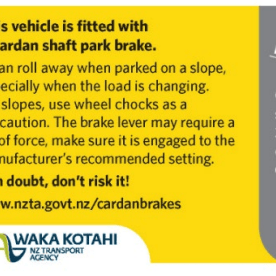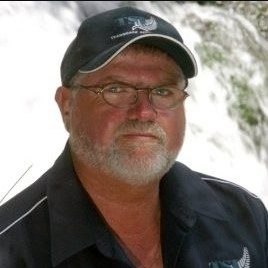
Purpose
The purpose of this Advisory is to share a letter from Waka Kotahi New Zealand Transport Agency (Waka Kotahi) about upcoming changes to temporary traffic management (TTM).
Summary
Waka Kotahi is reconsidering its strategy on TTM. 35 fatal crashes have occurred in the past five years at roadwork sites, leading to the need for a change from a prescribed rules to a risk- based approach and safer outcomes.
Transporting New Zealand will be presenting a submission to Waka Kotahi on these changes in the coming weeks.
Please read the attached letter from Waka Kotahi and let us know if you have any thoughts on the issue and the proposed changes.
Review of Temporary Traffic Management and how it relates to the freight industry
Maintaining our roads so they continue to provide a safe and efficient network for people and goods is one of the key functions of Waka Kotahi. However, they can also be a source of frustration for some. Despite considerable improvements already they also remain a high-risk working environment for contracting staff and for road users. In the past five years, 35 fatal and 142 serious crashes have occurred at roadworks sites across Aotearoa New Zealand. Current safety measures are clearly not enough. Safety audits conducted in the past two years have identified a number of areas for improvement around the way Temporary Traffic Management (TTM) is deployed at work sites. There is also an opportunity to align Waka Kotahi TTM guidance with Worksafe’s Road and Roadside Worker Health and Safety Good Practice Guidelines.
Because safety will always be amongst our top priorities, the TTM around roadworks sites is delivered is undergoing a comprehensive change. Waka Kotahi has proactively worked with the sector, including construction and maintenance partners, local councils and WorkSafe to guide a fundamental review of TTM principles and how they will be delivered from now on.
The core goal of TTM must be to ensure “road workers and road users go home safe every day”. The single most important change for TTM is a move away from prescribed rules towards a risk-based approach. The current TTM rules can steer users to a compliance, or tick-box approach. The new, principles-based focus will be on achieving the lowest overall risk possible. Taking a risk-based approach puts more emphasis on good planning up front and provides the flexibility to create safe practices for a range of different activities to keep roadworkers and road users safe.
In the future, the hierarchy of TTM interventions will start with eliminating the risk, as much as reasonably practicable. Of course, the best way to eliminate risk around a roadworks site is to close the road. Already this season, several Waka Kotahi sites have deployed full, or overnight, closures to deliver significant maintenance works safely and efficiently. This has already created other significant benefits, enabling us to carry out work not only more safely but also more efficiently, so that maintenance and improvement works can be finished and roads reopened more quickly. As we continue to balance the growing needs of maintaining our roading network we will make more use of full or partial closures in the future.
We appreciate this change in approach will impact road-users, and in particular, the freight industry. As road closures become more common, Waka Kotahi will need to work even more closely with the freight industry to understand key freight routes better and the freight task that occurs on those routes. This includes assessing detour routes for freight truck suitability and making sure we consider freight schedules, impact on driver resourcing and risks to the supply chain. We will continue to work with the freight industry to ensure the new approach to TTM delivers the required safety improvements for contractors and road-users as well as keeping New Zealand’s supply chains open and efficient.
The draft NZ Guide to TTM will be released for consultation this week. It’s important we continue to work with you to ensure the guide strikes the right balance between serving economic and freight needs with safe and efficient management of our roading network. We encourage all members of the freight industry to review this draft and provide feedback to Waka Kotahi.
If you’d like to take a look at the new guide, or submit feedback, you’ll find everything you need to know on the Waka Kotahi website:
https://nzta.govt.nz/roads-and-rail/new-zealand-guide-to-temporary-traffic-management
Regards
Brett




